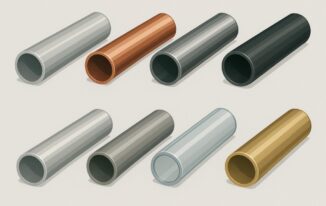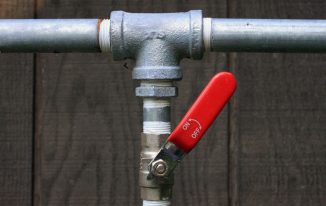
Sanitary pipes are designed for use in industries that require following strict hygiene standards. They allow the sterile transport of fluids by eliminating the risk of contamination, making it easier to ensure product integrity.
Sanitary pipes can be made from a variety of materials, including plastic, copper, aluminum, stainless steel, glass, titanium, high-density polymers, and high-performance alloys. Regardless of what material they’re made from, they must adhere to strict FDA and ASME standards. This article will review the most popular materials used in sanitary pipe construction.
PVC and CPVC Plastic Pipes
PVC and CPVC are both widely used materials in sanitary pipes. The difference between these two types of plastic is that CPVC, or chlorinated polyvinyl chloride, has a slightly different chemical composition. It is composed of chlorinated PVC, which is more heat-resistant and stable than regular PVC.
PVC and CPVC are lightweight, corrosion-resistant, and cost-effective. However, they have a relatively low temperature resistance and are susceptible to UV degradation.
Copper Pipes
There are two primary categories of sanitary copper pipe. Some pipes are rigid, while others are flexible. Rigid copper pipe is commonly used in water and gas lines in both residential and commercial environments. Flexible copper pipes are used for A/C systems, refrigeration, and gas distribution.
Copper has the benefit of being antimicrobial, which makes it a good choice for sanitary pipes. It’s also temperature-resistant, which means copper can be used for both cold and hot water supplies and even steam distribution. The primary downsides of copper are that it is susceptible to corrosion and costs more than other materials.
Stainless Steel Pipes
Stainless steel is a popular material for any application that requires sanitary conditions. This alloy is made primarily of iron but also contains nickel, chromium, and other elements. There are many kinds of stainless steel, with grades 304 and 316 being the most popular for use in sanitary pipes.
Stainless steel is corrosion-resistant, durable, and very easy to clean and maintain. However, it’s more expensive than some types of sanitary pipes and does have the potential for galvanic corrosion when it comes into contact with other metals or electrolytes.
HDPE Pipes
High-density polyethylene is a thermoplastic polymer made out of petroleum. Known for its impressive flexibility, strength-to-weight ratio, and chemical resistance, HDPE is often used as a sanitary pipe material.
HDPE is corrosion-resistant, flexible, and durable, which makes it ideal for situations that require withstanding difficult environmental conditions, ground movements, or pressure changes. HDPE is also a cost-effective material choice. However, it has limited temperature resistance and is incompatible with certain chemicals.
Aluminum Pipes
Aluminum is prized for its lightweight nature and ease of handling. It’s not as popular as a sanitary pipe material as some on this list, though, because it is susceptible to cracking and warping over time. Aluminum pipes must be replaced more frequently than other types of sanitary pipes.
Titanium Pipes
Titanium pipes are strong and corrosion-resistant. However, pipes that contain this element are more expensive. While the cost of titanium pipes prevents their widespread use, incorporating titanium into stainless steel alloys is a good way to take advantage of the element’s superior properties.
Glass Pipes
Glass pipes are clean and transparent, but they are very susceptible to breakage. Glass sanitary pipes aren’t as widespread in use as many on this list, but they’re ideal for specific applications within the food and beverage industries.
How to Choose the Right Material
Those tasked with choosing a sanitary pipe material must consider factors like corrosion resistance, chemical resistance, and durability in addition to cost-effectiveness. When in doubt, contact a pipe manufacturer with questions.



